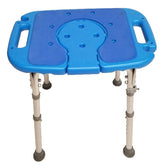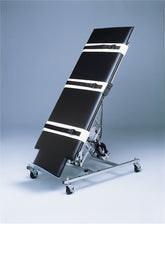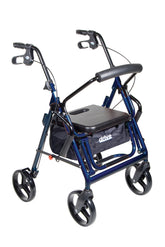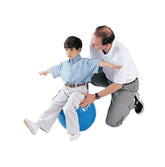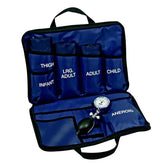
Stadiometers vs. Digital Height Measurement Tools: Which Is Right for You?
Thinking about purchasing a height measurement tool but got confused with questions like, should I stick with traditional stadiometers, or invest in digital devices that offer advanced features? Well, to simplify your decision-making process, we have compared both of the options in this blog post, whether you are a clinic owner or any concerned parent monitoring your child’s health!
Stadiometers: Traditional and Hands-on Approach
We will start our discussion with stadiometers, or we can say old-school, reliable workhorses for height measurement. You've probably seen them in clinics or gyms. They're all about that hands-on touch and come in different types, like:
-
Wall stadiometers that are fixed to a wall.
-
Portable stadiometers that you can take with you on the go.
-
and even Pediatric stadiometers that are used for children.
How do they work?
It’s simple. Stand up straight, slide down on the headpiece, and read off the measurement. Simple and very accurate when used correctly. The big benefit there? Reliability. No batteries to drain, no fussy tech—just reliable measurement.
Digital Height Measurement Tools: Efficiency and Modernization
Now let's talk about recent additions to the block: digital height-measurement tools. They utilize technologies like ultrasonic waves or lasers to tell you your height instantly. Imagine standing in front of a machine, and there you go! Your height is on a screen. You can check different types of digital height measurement tools:
-
Ultrasonic digital stadiometers
-
Sonar digital stadiometers
-
Portable digital stadiometers
The appeal is speed and convenience. They're really quick to use, which is great for busy practices or for getting measurements on squirmy kids. Many digital tools also save data automatically, which means it’s easy to see how kids grow and change over time.
Choosing the Right Interface: Simplicity vs. Advanced Features
Here is where it is really interesting. Traditional stadiometers are simplicity itself. Slide, read and you're done. No learning curve to get through and no buttons to decode. It doesn't get any easier with traditional stadiometers.
On the other side, digital models offer a range of features. Some offer big displays that are easy to read, voice prompts, and even Bluetooth to synchronize with your gear. Such features are worth it for those who need to keep track of information or enjoy a more tech-heavy experience.
But with more advanced features comes greater complexity. Some people might find that the digital interface is a bit too complicated, especially those who are used to the simplicity of a manual stadiometer. It is all about that balance between ease and the features you need.
Here’s a quick comparison table:
|
Feature |
Stadiometer |
Digital Height Measurement Tool |
|
Accuracy |
High (manual) |
High (automated) |
|
Speed |
Moderate |
Fast |
|
Ease of Use |
Very simple |
Simple to complex (depending on features) |
|
Data Recording |
Manual |
Automatic (some models) |
|
Portability |
Available |
Available |
|
Technology |
Mechanical |
Ultrasonic, Laser |
|
Cost |
Generally lower |
Generally higher |
Hence, a clinic might prefer a digital tool for convenience and speed of recording data, while a parent might select a simple portable stadiometer for home use.
Conclusion
Ultimately, your best height measurement tool will be determined by your own individual needs. If you're concerned with simplicity and reliability, a traditional stadiometer is a good choice. Or, if you're concerned with speed, advanced features, and recording of results, a digital tool is your best choice.
Consider your budget, how frequently you will be using it, and what specific needs your situation requires. If you're tracking children's development, tracking patient charts, or simply interested in your own height, there is a tool that is just right for you.

